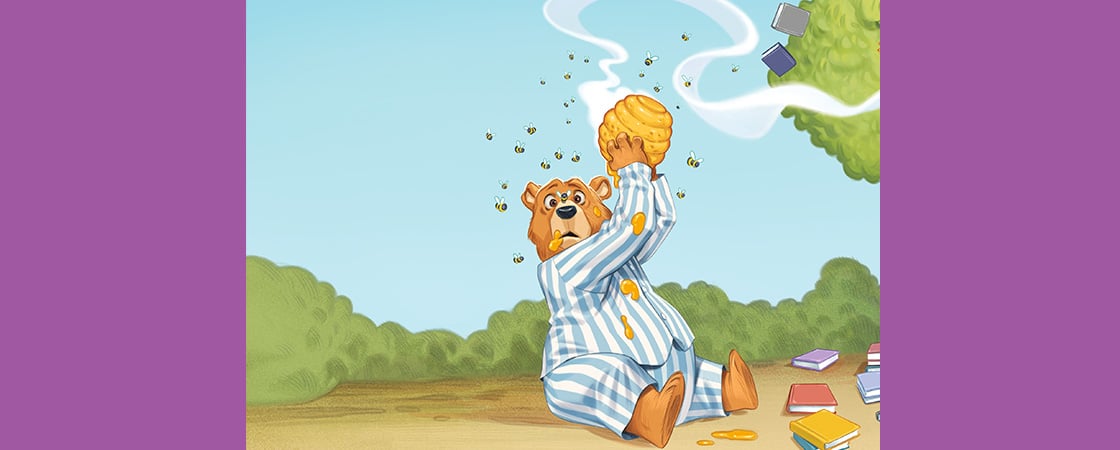Bear follows his nose
Wherever it goes—
All the rest of him
Shuffles behind.
His nose is so clever
It never—no—never
(Good nose that it is)
Fails to find
A beehive of honey
All golden and runny,
So complaining
A bear never does,
But, poor nose, being first,
Dives into the worst
Of the wings and the stings
And the buzz.

